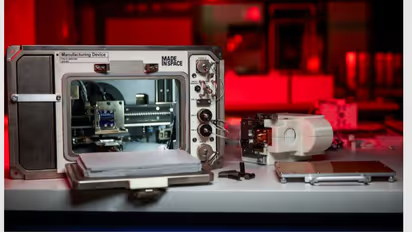NASA tests 3D printer which uses Moon dust as construction material

Synopsis
According to the report, a spaceship docked with the International Space Station (ISS) earlier this week delivered some critical terrestrial cargo - a 3D regolith printer that uses lunar dust to manufacture solid materials.
Most 3D printers use filament or resin to create tiny things used in maker projects, replacement components, and various other goods. According to media sources, the National Aeronautics and Space Administration (NASA) wants to replace such parts with moon rocks. According to the report, a spaceship docked with the International Space Station (ISS) earlier this week delivered some critical terrestrial cargo - a 3D regolith printer that uses lunar dust to manufacture solid materials.
The Redwire Regolith Print (RRP) project will investigate 3D printing regolith in conjunction with ManD, a current ISS printer technology. According to the official Twitter account of ISS Research, the findings may help to assess the potential of regolith as raw material and 3D printing as a technique for future space missions. As per the space agency, the primary goal of the print operations is to show the manufacturing process capabilities in microgravity.
Even though 3D printing in microgravity is complex, the agency says that using regolith as a 3D printing material may benefit Earth. NASA believes that such technology might one day be used to build homes, landing pads, and other buildings for future exploration missions using on-site resources rather than transporting all raw materials.
If the trials are successful, RRP may allow astronauts to print a portion of soil-based homes as required, decreasing the amount of building equipment NASA would need to bring to the Moon and Mars on future missions. The space agency has indicated that it plans to look into the feasibility of 3D printing dwellings on Mars.